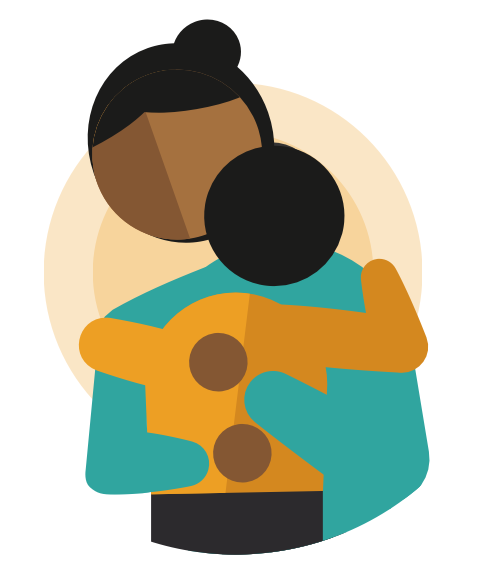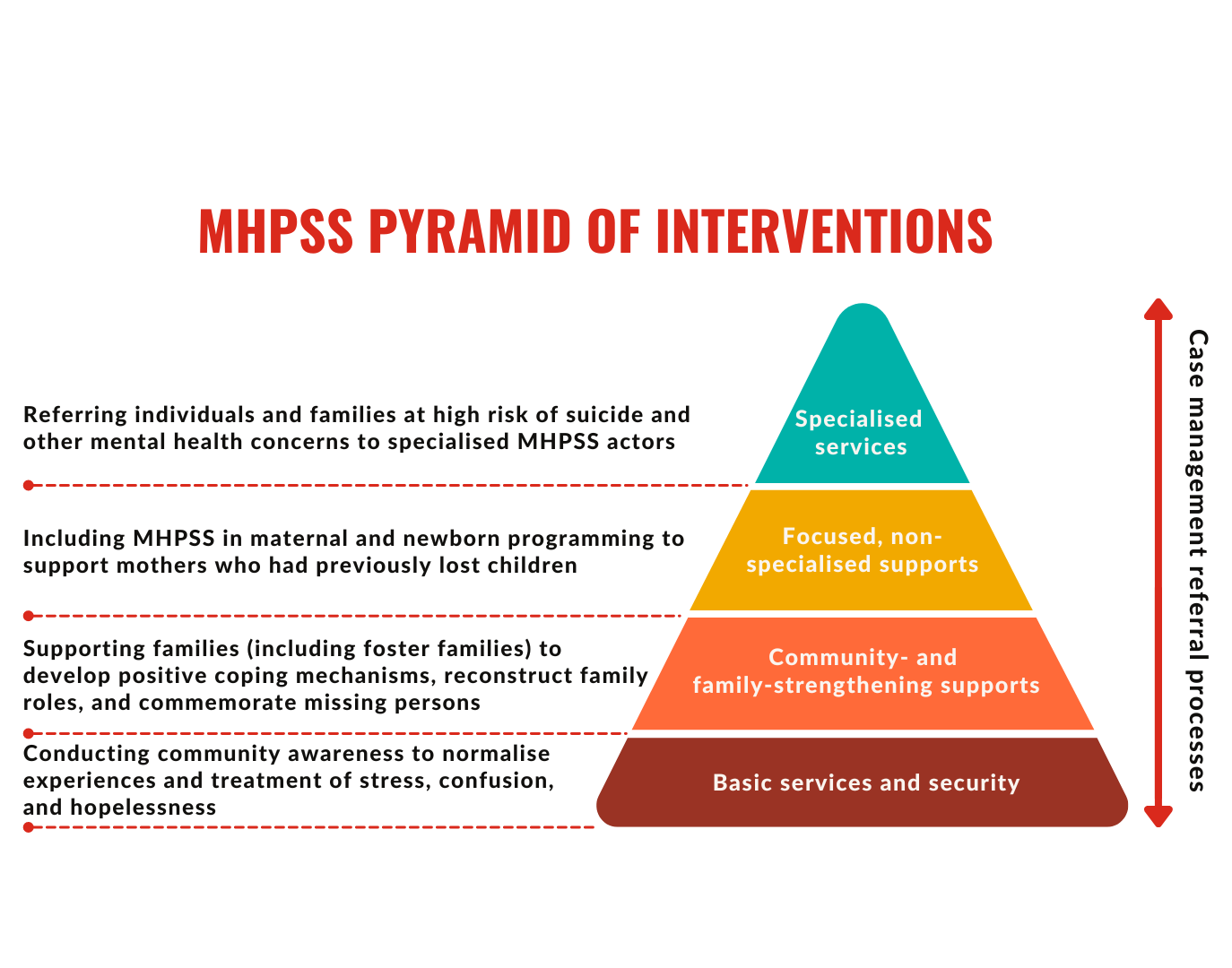Children Facing Loss and Grief
MHPSS recommendations for cross-sectoral themes
The loss of loved ones, familiar places, or a sense of identity and control creates a sense of grief, increases children’s risk of prolonged emotional and physical pain, and exacerbates pre-existing mental health conditions.
Read the summary below or access the full guidance.

Grief is the name given to the painful emotions, thoughts and behaviours that people experience in response to the loss of loved ones, persons or places with which they feel a connection. Though grief is often associated with death, the same painful emotions accompany being separated from family, friends, and familiar places such as home, school or a place of worship. Grief also accompanies the loss of security, identity, hope or confidence in the future. The effects of grief can be overwhelming, particularly for children.[1]
Psychosocial support is one way of helping people cope with grief and loss. An individual’s needs may be different from those of the wider community, especially for people on the move. Therefore, it is important to learn more about the specific child and family before implementing MHPSS interventions. This will allow you to deliver tailored interventions that:
- Align with the beliefs, practices, culture and religion of children and families
- Fit the child’s developmental stage, risk and protective factors,
- Identify and respond to needs that extend beyond grief or loss

[1] Jones, 2014
